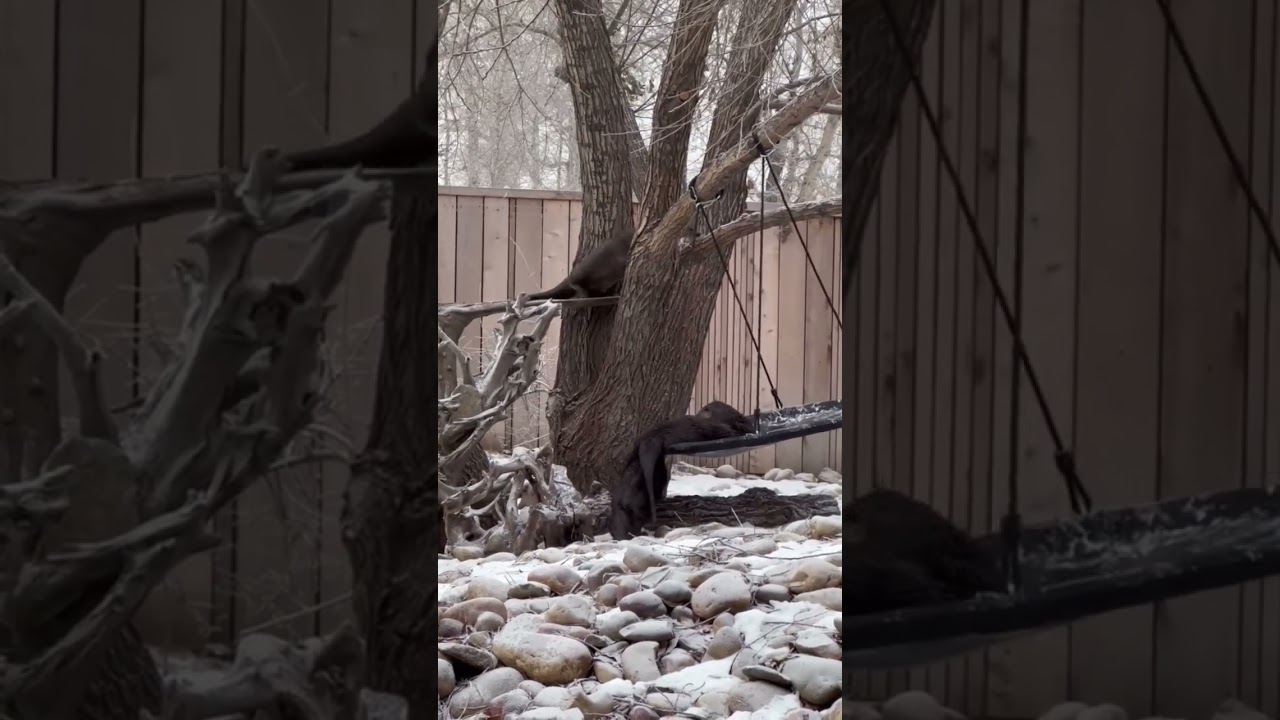- The playful behavior of North American river otters and its significance in their social structure and survival.
- Detailed examination of the habitat and lifestyle of North American river otters, including their adaptability to various environments.
- The role of otters in aquatic ecosystems, focusing on their influence on biodiversity and ecological balance.
- Insight into the conservation challenges facing North American river otters and efforts undertaken to protect their populations.
- The educational importance of observing otters in captivity within zoo settings and the benefits this provides to conservation science.
The playful antics of North American river otters have long fascinated both casual observers and scientists. Their engaging behavior is a key element of their social structure. Play in otters is not mere frivolity; it is intricately linked to survival and social cohesion. Through activities such as sliding down muddy banks, wrestling, and chasing one another, otters develop crucial survival skills. These playful interactions help in honing their hunting techniques, building social bonds, and establishing dominance hierarchies. Play allows juvenile otters to learn agility and coordination, essential traits when catching slippery prey or evading predators.
Otters also use play to communicate within their social groups. Body language and vocalizations during play provide information on social status and intentions. This non-verbal communication is vital in species that are often as elusive as they are engaging. Understanding the significance of play reveals much about the behavioral ecology of otters. It showcases the sophistication of their social structures and highlights their reliance on communal living.
The adaptability of North American river otters to their varying habitats is impressive. These mammals are semi-aquatic and can thrive in diverse environments, from the calm lakes of parklands to the rushing streams of dense forests. Such adaptability is rooted in their physical characteristics. Their dense, water-repellent fur provides insulation in cold waters, while their streamlined bodies and webbed feet make them excellent swimmers. They possess long, muscular tails used for propulsion in water and steering while navigating their aquatic domains.
Otters are versatile in their diet, feeding on a variety of food sources such as fish, crayfish, and amphibians, reflecting their opportunistic feeding habits. This flexibility in both habitat and diet ensures that otters can survive in varied ecosystems. Otters also exhibit keen spatial memory and problem-solving skills, which aid in remembering the locations of food caches during lean times and navigating complex aquatic environments.
North American river otters wield significant ecological influence. As apex consumers in their habitats, they play a crucial role in maintaining the health of aquatic ecosystems. Otters help regulate prey populations, thus preventing any one species from becoming overly dominant. Their presence is often an indicator of water quality, as they are sensitive to pollution. Healthy otter populations suggest robust aquatic ecosystems. In controlling the populations of fish and other aquatic organisms, otters contribute to the overall balance and biodiversity of their environments. By understanding the otters’ niche, conservationists and ecologists gain insight into the health of aquatic systems.
Despite their adaptability and ecological importance, North American river otters face considerable conservation challenges. Habitat destruction, water pollution, and hunting have historically impacted their populations. Though conservation efforts have led to population rebounds in certain areas, otters still face threats in regions where habitat degradation continues. River otters are particularly vulnerable to pollution, which affects their food supply and habitat quality. Conservation initiatives focus on protecting water quality, restoring habitats, and reconnecting fragmented landscapes to support sustainable otter populations.
The reintroduction programs in some regions have been successful, demonstrating that proactive measures can aid in the recovery of otter populations. Conservationists are employing strategies such as legal protection, habitat restoration, and pollution control to safeguard these charismatic animals. Public awareness campaigns play an equally vital role, emphasizing the value of protecting otters and their habitats.
Observing North American river otters in zoological settings provides significant educational benefits. Zoos serve as conservation ambassadors, offering the public a glimpse into the lives of otters that might otherwise remain hidden in the wild. This accessibility fosters a greater understanding and appreciation of these creatures, supporting broader conservation aims. Zoos conduct research that enhances our understanding of otter biology and behavior, informing both in-situ and ex-situ conservation efforts.
Interactive exhibits that mimic natural habitats encourage behavioral expression, allowing researchers to study social interactions and play behaviors up close. The data gathered from these settings is invaluable for understanding complex social behaviors and developing conservation strategies. Visitors leave with a sense of connection that can inspire action and support for wildlife conservation initiatives.
In observing North American river otters play, we not only witness engaging behavior but gain insights into their ecological and social complexity. Their adaptability and ecological roles highlight the interconnectedness of all life in aquatic ecosystems. Understanding these dynamics is critical as we strive to protect their future. Through conservation, education, and research, we continue to learn from these remarkable mammals, ensuring their presence for generations to come.
*****
Source Description
It’s always an otterly good time in the Brawn Family Foundation River Lodge! 👏
From tree climbing trees and hammock swinging to playful swimming and scurrying through their overhead tunnel, our energetic bevy of otters is always on the move. 🦦✨
#YourZooYYC

